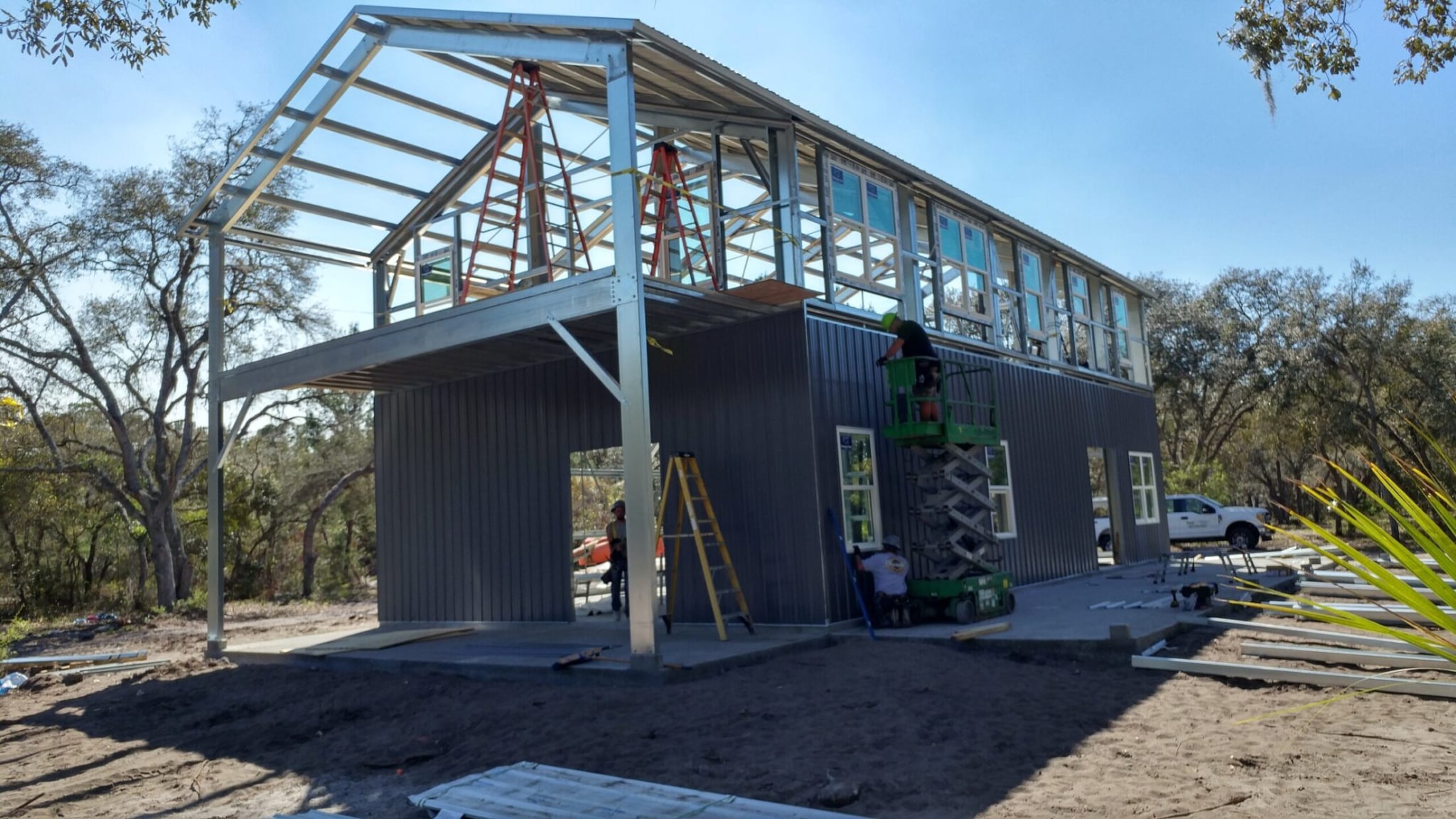Cold-Formed Steel Buildings vs. PEMB (Red Iron) Buildings: Which One is Right for You?
When it comes to choosing a steel building, two of the most common options are Cold-Formed Steel (CFS) buildings and Pre-Engineered Metal Buildings (PEMB), also known as red iron buildings. Both have their advantages and ideal use cases, but understanding their differences can help you make an informed decision. Let’s dive into the key factors to consider when selecting between these two steel building types.
Material and Construction Differences
Cold-Formed Steel (CFS) Buildings
CFS buildings use heavy gauge steel that is roll-formed into structural components at room temperature. These lightweight but strong components are then assembled on-site.
Advantages of CFS:
- Lightweight and Strong: Despite being lighter than red iron buildings, CFS maintains high strength-to-weight ratios.
- Corrosion Resistance: Galvanized steel components offer excellent protection against rust and corrosion.
- Precision Manufacturing: Roll-forming ensures accurate, consistent components, reducing waste and increasing efficiency.
- Easy to Modify: CFS structures can be expanded or altered more easily than PEMB structures.
- Quick Assembly: Due to their lightweight nature, CFS buildings require less heavy equipment and can be built faster.
Disadvantages of CFS:
- Limited in Larger Spans: CFS is not as effective for large, clear-span buildings beyond about 100 feet.
- Higher Cost per Pound of Steel: The price of CFS per pound is often higher than red iron, though this is offset by lower installation costs.
Pre-Engineered Metal Buildings (PEMB/Red Iron Buildings)
PEMB structures, commonly called red iron buildings, are made from heavy, welded I-beams that provide strong, rigid frames capable of spanning large distances without internal supports.
Advantages of PEMB:
- Superior Load-Bearing Capacity: Red iron buildings are ideal for heavy industrial applications, large warehouses, and manufacturing facilities.
- Efficient for Large Clear Spans: They can span over 100 feet without needing interior columns, making them great for open floor plans.
- Durability: The heavier steel components provide exceptional resistance to extreme weather conditions.
- Longevity: Properly maintained red iron buildings can last for decades with minimal issues.
Disadvantages of PEMB:
- Heavier and More Expensive to Transport: The I-beams require special handling and transportation, adding to overall costs.
- Longer Installation Time: Assembly often requires cranes and additional labor, increasing installation costs and time.
- Potential for Rust: Though typically coated for protection, red iron is more susceptible to corrosion over time compared to galvanized CFS.
Cost Considerations
- CFS buildings tend to have lower overall construction costs due to reduced labor, faster build times, and fewer heavy equipment requirements.
- PEMB buildings may have lower costs per pound of steel, but their total cost can be higher due to longer assembly times and heavier materials.
Lead Times
- CFS buildings: Typically have lead times of 3-4 weeks for delivery.
- PEMB buildings: Generally require 12-14 weeks for delivery due to the complexity of manufacturing and transportation.
Ideal Applications for Each Type
- COLD-FORMED STEEL BUILDINGS
- Residential garages and workshops
- Small-to-medium commercial buildings
- Storage facilities
- Agricultural buildings
- Retail spaces
- PEMB (RED IRON) BUILDINGS
- Large warehouses and distribution centers
- Manufacturing plants
- Aircraft hangars
- Sports arenas
- Industrial facilities
Which One Should You Choose?
If you need a lightweight, cost-effective structure with quick installation, Cold-Formed Steel is the better choice, especially for small-to-medium buildings. However, if you require large, clear-span spaces with heavy load-bearing capacity, a PEMB (Red Iron) Building will serve you best.
Both options provide durable, long-lasting structures, and the right choice depends on your specific needs, budget, and project requirements. Additionally, both CFS and PEMB buildings are custom engineered to meet the customer’s specific standards, ensuring that your building is designed precisely for its intended use. Understanding these differences ensures you select the best steel building for your application.
